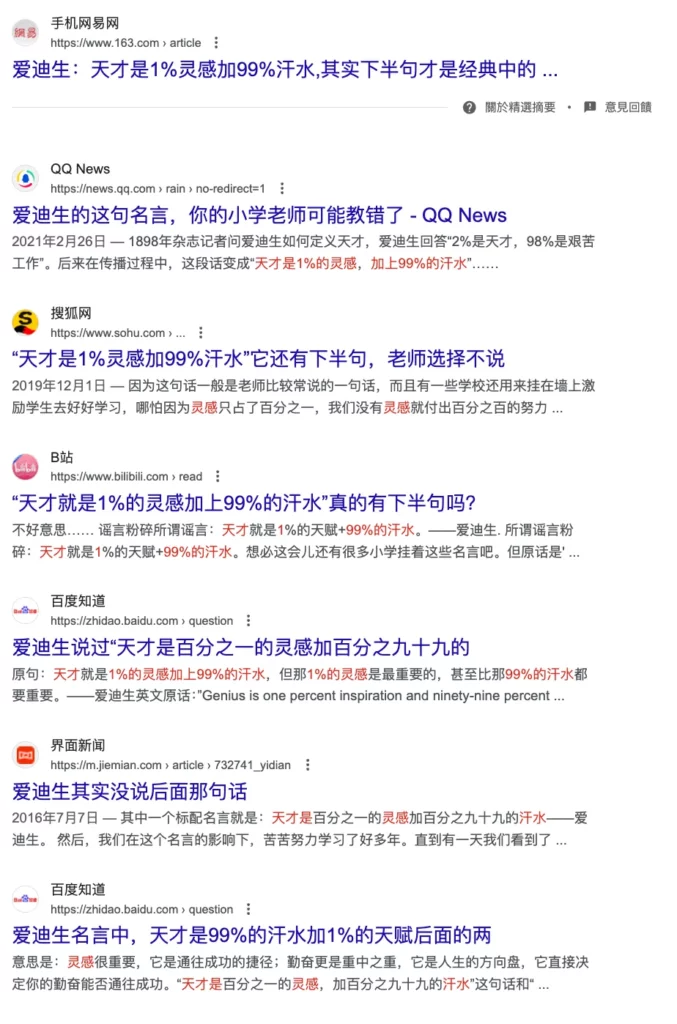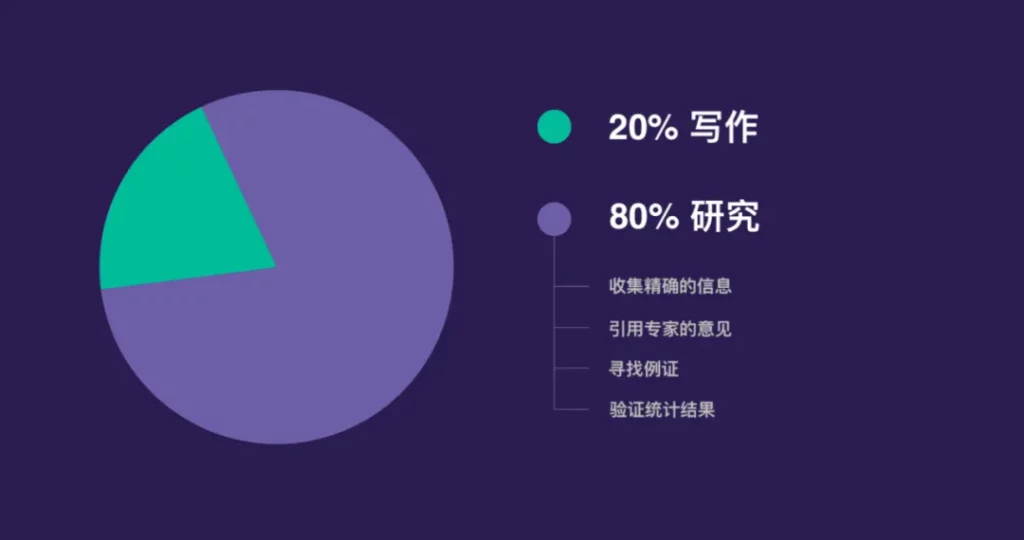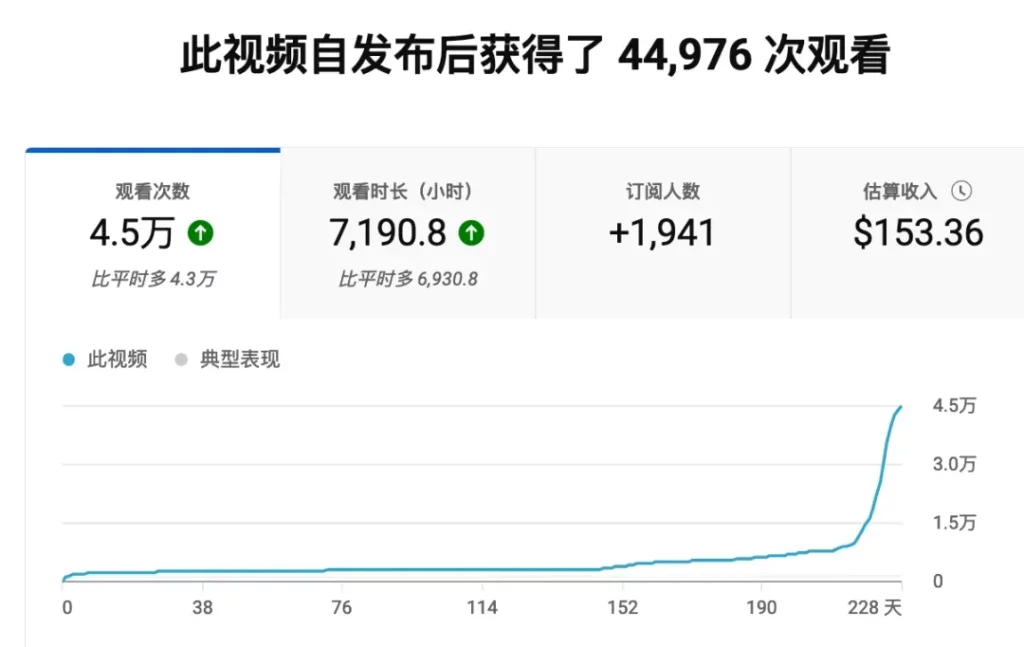I recently came across a new article on a famous foreign SEO site calledQuality SEO Content: The QRIES Approach for Better Rankings》。
This article is in full English, so if your reading skills are up to it, check it out for yourself.
If that doesn’t work I’ll briefly summarize, this post describes how to pass theQRIES frameworkto create high-quality SEO content to boost search engine rankings.QRIESin the name ofQuotes(Citation),Research(Research),Images(Photo),Examples(examples) andStatistics(statistics) to improve the attractiveness and credibility of content through these five areas. The article also mentions how Google assesses content quality, describing theE-E-A-T (Experience, Expertise, Authority, Trustworthiness) Framework, and emphasizes the need for high-quality content that meets the user’s search intent and provides a good user experience.
Although this content is about SEO, it’s just like theGoogle’s EEAT PrinciplesAs always, search engines try to find the content that best meets the needs of users. In fact, self-publishing creators also need to find how to write content that best meets the needs of users.
I myself am a writer who likes to create content as I go along. This of course has a lot of benefits, and when creative, the ideas flow and the passion is strong. But there are many times when it’s hard to know what to write and how to write it.
In fact, a good creator needs to consistently output content in a steady and efficient manner. This actually requires methodology.
A former famous journalist I know, Mr. Liu Lian, once invented a刘韧体, each of his Blogs is a paragraph like 1, 2, 3, 4, 5. It doesn’t even sound like it could be called an invention. But when we are faced with a blank piece of manuscript paper (screen) and are bewildered as to how to start. Then we know the importance of methodology.
There’s another famous one for news writing.The “5W+1H” principle, that is: who (Who), when (When), where (Where), what (What) why (Why), the process of how (How), in other words: the characters, time, place, events, causes, the process of occurrence (language: time, place, characters, causes, through, results). If these six elements are strung together and summarized into a single sentence, it is an easy-to-understand sentence.
It also sounds super simple, isn’t this something we learned in elementary school when we looked at pictures and talked? Actually, it’s not. You turn on a lot of news to read it now, and some of it just doesn’t seem to have a beginning or an end.
Individual creativity, inspiration, can help you raise your upper limit, and good work methods, principles, can keep you raising your lower limit, keep you performing at your worst, and outperforming your peers.
Okay, let’s talk specifically about QRIES now.
Q: Quotes Introduction
Often, it doesn’t matter what a quote says, it’s who says it and when they say it that matters. Many celebrities have said things that you may have said as well, but only what celebrities say will be believed.
Of course this is a skill that many writers are well versed in, and some have even invented a method of planting everything they want to say on Lu Xun. This phenomenon has become more and more intense, and as a result, there is even such a terse picture: Lu Xun said, “I didn’t say that.

Edison is said to have said.
Genius is 1% inspiration, plus 99% perspiration.
We don’t want to discuss the truth or meaning of the quote itself today. But if you do a search you will find that such a simple sentence is discussed in countless articles on the Internet. Whether it’s true or not, how it’s interpreted, whether there’s a second half to it or not, it’s not the magic of the phrase itself, but the influence of the person who said it that’s responsible for it.

When creating our own articles, we can search for industry experts, industry celebrities whether they have expressed similar views, or the opposite point of view, citing their views, can cause more discussion and dissemination.
For example, one of my posts discussing self-management quoted Cixin Liu’s regretful resignation statement, “TheCixin Liu Regrets Quitting His Job: Most People Need a Job to Ensure Creativity“. In this article, there are also examples of writers who were already at the top of the rich writers’ list, but after they became famous and rich, they continued to work in politics. There is also Haruki Murakami. Of course Yu Hua’s comments are a counterexample to the topic of this post, but the fact that Yu Hua continues to produce good books and new ones, and is incredibly creative, may also indicate that he is very self-disciplined. This article, alone, has over 14,000 reads on the public platform.
R: Research
Everyone is now talking about the information cocoon, the information explosion, the information overload. You can see similar articles everywhere. But a lot of articles, a lot of videos, are repetitive content, or the same copy, slightly modified as a new article, or read over by a different person as a new video.
Truly profound content will always be scarce. Search engines can tell if your articles are duplicates, if they are copied from another site, and if they are they will downgrade you. Recommendation system sometimes, will also recommend a lot of duplicate content. But real users, who see unique content and deep insights, will like, share and reward. The referral system will also give you more traffic based on user feedback on your posts.
Writing an essay, specifically writing, typing, and organizing the text, should only take up 20% of your time, and thinking and researching should take up 80% of your time.

Before you want to discuss a topic, you can search, you can ask ChatGPT, you can sift through many articles to find your own niche. You can also find one or two of the best articles, sources, and think deeper in the process.
With in-depth thinking and unique content, your articles are more likely to stand out inside search engines and recommendation systems.
I: Images Pictures: A picture is worth a thousand words.
Whether it’s WeChat’s public number’s infomercial, Weibo’s Twitter feed, or the home screen of Youtube or Jitterbug, the main interface of all self-publishing platforms. The cover is the brunt of the visual centerpiece.
Especially with platforms like Twitter and Twitter, where there are a lot of people posting text-only content, content with a good cover is more likely to stand out in the timeline.
The same goes for an article. Images inside a long article are a natural dividing point when reading and are the focal point of the user’s eye.
What’s more, pictures can carry a lot of content that words can’t convey.
The picture below is mine.English Easy Read Official WebsitePart of a section where words and pictures come together to explain how to learn English with English Easy Read. You will find this content, with only text, difficult to explain clearly. It also looks dry if there are only screenshots to make the process and intent clear. A combination of graphics and text would be complementary.

By the way, you are welcome to go to the App Store and search for “English Easy Read“, we have just updated it to version 1.25 and continue to add various useful features to build a more closed-loop English learning chain.
Pictures are very expressive a lot of the time, for example, I once wrote an article, “How I got my WeChat public number to gain a large number of fans through the explosive text”, this article is sprawling thousands of words. In fact, the following picture can be summarized.

That’s the power of images.
Look at this statistic chart again, which is from my pop-up speech, “TheWhy do some people gain ten years of your work experience in one year?The stats chart for “Breaking 40,000 plays in a couple days on tubes. It made over $150 dollars at the time.

Now that another long time has passed, this video has more than 60,000 views and has made more than 200 dollars. But the picture is still more appealing than the one above.

So, the timeframe chosen, and the dimensions can reveal different information.
The art of writing is not only about what kind of message is conveyed, but how it is conveyed.
E: Example Examples and stories
The world is never short of reason and method. Reasoning and methods are empty. Real-life examples and stories of what really happened hit home the hardest.
Just like my pop-up article ex-wife article, if you say, what is this article summarized in AI as a truth? It’s really simple: a person’s education doesn’t matter that much, and if they’re willing to work hard they can achieve their own success. But there’s no way to impress people with an article like this.
And this post of mine contains a real case, a real story. It is flesh and blood, a life story. So many people reading this have been inspired and infected by it that my subscriptions have skyrocketed, so the rewards are all up to 30,000+.
There are even a lot of people who write articles about their own stories, and chances are they graduated from middle school, too, and so on. It’s the details in the story that move them.
Some of the cases and stories within the articles may be fictionalized, but they can be contagious if written well.
It’s actually better to write a real story than a fictional one, and it’s easier to move people. Because all the details are there in your mind, you don’t have to construct the details, and you don’t have to worry about the details looking too fake. A true story often has more coincidences and is more ridiculous than a fictional one, but it still seems more plausible overall.
When making a video, it’s also true that by telling your own personal story, the narrator is more confident and more infectious to your audience.
S: Statistics Back up your claims with statistics.
Often times, our own examples and storytelling skills are great. But readers are still not convinced. This is where some third-party, authoritative statistics, charts and graphs can give more credibility to our point of view.
For example, when I wrote “Writing Books is a Really Unprofitable Business,” it was the story of a professional writer who couldn’t support his family and went to work at the age of 51, even going to a construction site for odd jobs, that triggered me to look into the subject. But I didn’t have an overall grasp of the publishing industry as a whole. So, I conducted a lot of searches. For example, I looked up the National Press and Publication Administration’s report analyzing the press and publishing industry.

From this data, it is easy to see that while traditional publishing has seen sluggish growth, digital publishing has been growing steadily.
My personal experience can verify this data, my weibo, before and after the publication of two books, royalties is about 100,000 yuan. But I get much more than that from digital channels, rewards, soft ads.
While I have personal experience, there is no way I can simply amplify my personal experience and put it out to the world without authoritative statistics.
Another example is Li Lu’s book, Civilization, Modernization, Value Investing, and China, which opens with a chart compiled by Professor Jeremy Siegel of the Wharton School of the University of Pennsylvania of the United States of America on the past performance of various broad categories of U.S. financial assets.

U.S. Return Performance of Major Financial Asset Classes from 1801 to 2014
This statistic includes Stocks, Nominal GDP, Real GDP, Long Term Bonds and Short Term Government Bonds, Gold and Dollars.
First of all 1 dollar is down to .051 after these 200 years. This is pretty clear that there is a basic rate of inflation for surface currencies. And gold has tripled in 200 years, so you could say it’s basically preserved in value.
The most surprising thing is that stocks have gone up about a million times in 200 years. From this result, stocks must be the most worthwhile thing to invest in. Lee Loc’s book goes into some of the reasons for this, and I won’t bother repeating them.
There is no doubt that such long-term statistical results exclude all random factors and show irrefutable long-term trends that trump any kind of simple textual argument.
How do you adhere to a methodology?
Simply put persistence pales in comparison. Today you see a methodology, may feel the heart of the heart, I can also write out a good article. But memories fade, people get lazy, and passion fades.
So how do we stick to one methodology. It’s actually quite simple, it’s another methodology called CheckList, checklist.
Doing any self-publishing creation should not only be a passionate creation, but it should also have a detailed process.
For example, if I make a Youtube video, it seems simple enough to talk to the camera for a couple minutes and then post it, but it’s not.
The process I’m going to do is:
- Choose a topic, select a few topics you want to talk about
- Search, research, search for relevant articles and videos, use chatgpt to ask questions and go deeper into the topic
- write a synopsis
- Start recording
- Compress into a format suitable for youtube (shortens upload time)
- Generate Chinese subtitles with TinyStudio
- Use TinyStudio (internal version, not yet released) to turn subtitles into full text, generate abstracts, keywords
- upload
- Go to social media and repost my new video
It’s a simple thing to say, and there are 9 items that come out of it, no checklist, and you’ll forget a session or two if you use that one a lot.
So, make a QRIES checklist for you that you can print out and post on your wall and look at it before you write to plan. Glance at it after writing and check to see if it’s done.

For some beginners who often don’t know what to write about, using the QRIES methodology and my checklist, having structure can also help you write informative articles.
QRIES Methodology for Self-Publishing Writing, How Beginners Can Write Convincingly Good Articlesappeared first onTinyfool’s personal website。